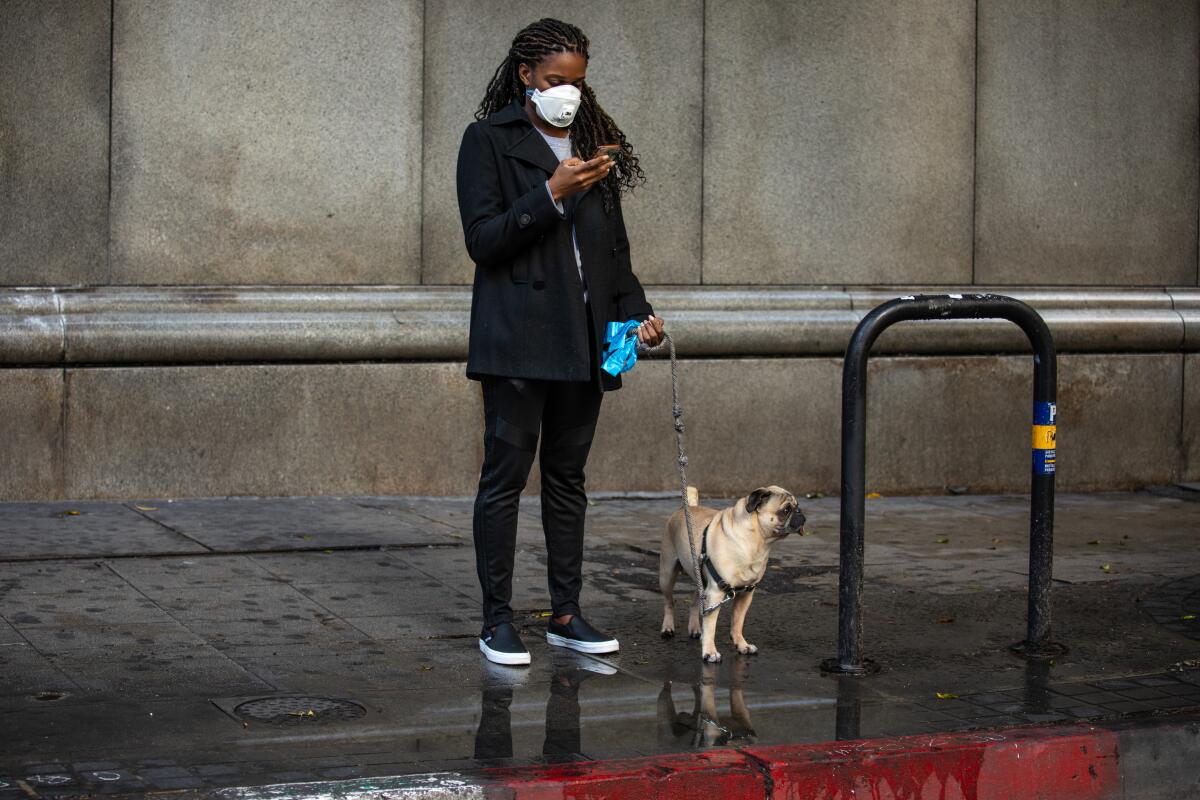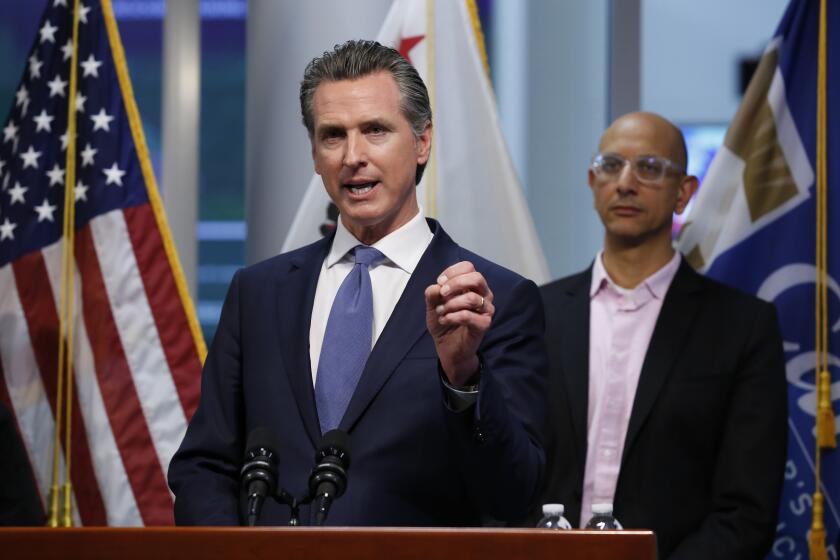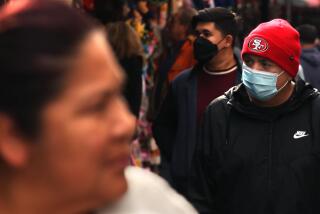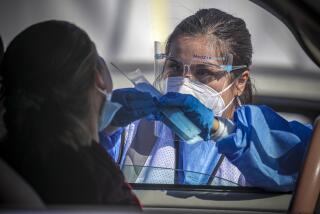California coronavirus cases continue to grow, reaching rate on par with New York

- Share via
SACRAMENTO — California’s top medical advisor said Wednesday that coronavirus cases continue to double in the state every three to four days, a fast pace on par with New York‘s, where some hospitals are overwhelmed and the death toll stood at 366 on Thursday night.
If that rate holds, California hospitals could see a surge in patients in one to two weeks, said Dr. Mark Ghaly, the state’s secretary of Health and Human Services, during a Facebook news conference.
“We originally thought that it would be doubling every six to seven days; we see cases doubling every three to four days,” Ghaly said. “[We’re] watching that trend very, very closely.”
Nicholas Jewell, a biostatistics researcher at UC Berkeley who has been tracking the pandemic, said the coronavirus is spreading rapidly throughout the U.S., at a rate quicker or on par with countries hit the hardest.
“The U.S. is now at the top of the charts for doubling rates,” Jewell said. “This is not the time to take your foot off the pedal and look forward to going to church on Easter.”
Several major banks and financial institutions will delay foreclosures, provide mortgage relief to California homeowners struggling due to the coronavirus.
President Trump said this week he hoped to remove social restrictions by the April 12 holiday, a proposal that received strong pushback from governors including Newsom and health experts across the U.S.
Ghaly said the estimates on how fast the virus is spreading are based on a model created as the epidemic first broke in California and updated with new data on a daily basis, including information from hot spots such as Santa Clara and reports from large hospitals.
“We take that information every single day,” he said.
But even as Newsom announced that testing in the state had been conducted on more than 66,800 people, he acknowledged that, “it’s not good enough,” to predict an accurate picture of what is happening or meet medical needs.
It was not immediately clear if the new tests included in the updated number represented an increase in testing or tests that were done over past weeks since the start of the outbreak, and what information they would provide to researchers. As of Wednesday morning, Newsom said 2,535 people in the state had tested positive, including 37 children under the age of 17.
He declined to provide additional details about state models, saying data would be provided in coming days as better information becomes available.
“Until I have that, we are going to hold the current [numbers] back,” Newsom said when asked about hospitalization rates and other markers.
The increase in testing numbers is largely due to better reporting by the patchwork system of public hospitals, private vendors and academic institutions performing the tests. Until this week, not all of those facilities were reporting results to the state.
Newsom acknowledged that the state was still working to ensure the various testing providers are “on the same page” when it comes to what they report. Many labs have not been reporting data on negative cases, a vital statistic needed to understand what percentage of the tested population is infected — and ultimately to model projections for infections in the state.
Newsom also said mass testing is still stymied by slow results and a lack of supplies, with “tens of thousands” of people still waiting to receive word that they are positive or negative, which can take days.
He said that despite the new reporting, the state still needs broader testing to better plan for an expected surge of patients in hospitals, the first wave of which hit New York City this week. That includes the need for more random testing, called “community surveillance,” to better understand how the virus is moving undetected in those who don’t become seriously ill with COVID-19.
“It’s about what, where, when and why,” Newsom said. “What’s the purpose, what’s the intent of the testing protocols? What are we trying to ultimately achieve beyond just diagnostics for critical care needs? ... The sum total of that data will be profoundly important.”
The latest maps and charts on the spread of COVID-19 in California.
Earlier this week, Newsom increased estimates for how many additional hospital beds the state will need, now predicting 50,000 people may require in-patient medical care, nearly doubling initial projections.
In addition to asking hospitals to find an extra 30,000 beds to meet that need, the state is attempting to cobble together 17,000 spots that could be used for less serious levels of care, using hotels, motels, assisted living facilities and repurposed fairgrounds and convention centers. Many of those beds may ultimately end up serving not just those with medical needs, but homeless people in need of safe spaces or quarantine sites as well as frontline workers unable to return home due to exposure to the virus.
The Navy hospital ship Mercy is also expected to arrive in Los Angeles later this week, and the federal government has agreed to send eight field hospitals to California, for a total of about 2,000 beds. Newsom said multiple sites are already mobilizing those facilities.
While the state continues to struggle to gain a clear picture of the outbreak, Jewell, the Berkeley professor, cautioned that the expected surge in coming weeks does not mean social distancing and shelter in place orders are not working.
“We knew going in we will not see any impact of shelter in place for at least two to three weeks,” he said. “We have to be patient at this point and stay the course.”
Newsom echoed that message as well, and said the state had early data that the measures may be slowing the spread.
“We know it’s had an impact on bending that curve and buying us time,” Newsom said. “Every day, that is another day that we’re getting more assets, more physical and human resources, prepared for a worst-case scenario.”
More to Read
Sign up for Essential California
The most important California stories and recommendations in your inbox every morning.
You may occasionally receive promotional content from the Los Angeles Times.













